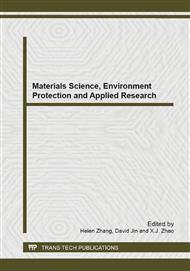p.449
p.453
p.457
p.461
p.465
p.469
p.473
p.477
p.481
Design and Study on Ocean Energy with the Horizontal Axis Tidal Current Turbine's Blade Especially for China's Low Tidal Current Velocity
Abstract:
Tidal current energy of sea surface is a kind of renewable energy with wide prospect of development. Because of its relatively high utilization ratio, the horizontal-axis turbine generation system utilizing tidal current energy has become the focus of technology development of tidal current energy all over the world. In this paper, the authors analyze the characteristics of surface tidal current energy along the coast of China. Meanwhile, we use BEM mathematical model to design the 2.5kW Horizontal Axis Tidal Current Energy Turbine Generator Blade, which is suitable for the features of tidal current energy in our country. The result of the prototypes dragging experiment indicates that this design method has good application value.
Info:
Periodical:
Pages:
465-468
Citation:
Online since:
March 2014
Authors:
Keywords:
Price:
Сopyright:
© 2014 Trans Tech Publications Ltd. All Rights Reserved
Share:
Citation:


